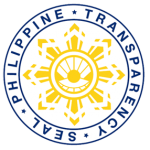PCC IP efforts gear towards better protected research, management, commercialization of innovation and technology
Another milestone was set as the Philippine Carabao Center’s (PCC) Intellectual Property and Technology Business Management (IPTBM) office started its full operation in 2019 as per the unveiling of IP-TBM marker last March 27, coinciding with PCC’s 26th Anniversary. IP is deemed as “any creation of the mind” that is produced from writing to tangible or intangible asset. Without protection, an IP can be stolen or be used without consideration of the creators and owners. The said initiative is under the project aimed towards the establishment of IP-TBM in PCC. It is a joint partnership between PCC and the Department of Science and Technology-Philippine Council for Agriculture, Aquatic and Natural Resources Research and Development (DOST-PCAARRD). “Protection of IP is important because you don’t only establish ownership of technologies by agency but also give due credit and incentives to the researchers while upholding the benefits of the general public,” Dr. Eufrocina Atabay, PCC IP Technology Transfer and Commercialization focal person, and scientist, said. PCC was among the 16 consortia member agencies that is implementing IP management program through DOSTPCAARRD funded projects. The project where PCC is involved, commenced on July 16, 2018 and will end in 2020 but PCC’s IP-TBM office will be sustained as part of the agency’s “Science and Technology Protocols.” On IP protection The Philippine Transfer Act of 2009 or RA 10005 stated that incentives and exclusive rights of inventors and creators to their inventions and its utilization should be considered. This is possible through IP protection. IP protection is classified as patent, trademark, copyright, utility model, geographical indications, and industrial design. “Patent” is a “technical solution to a problem that involves an inventive step, and is industrially applicable.” It is valid in the span of 20 years. Subsequent to patent is the “Utility model” which protects “innovations that are not sufficiently inventive but is industrial applicable”, and valid for 7 years. A “Trademark” or service mark is an expression or art that represents services. It has 10 years’ validity. Any expressive art can be protected through a “Copyright”. This involves music, architecture, motion pictures, both original intellectual and artistic expressions’ protection against usage for financial gain without permission from the copyright owner for lifetime. “Geographic Indications” involves usage of sign or image on products, which depicts certain qualities of its place of origin. Lastly, “Industrial Design” protects a maker’s unique creation and its qualities such as its qualities such as patterns as well as shapes from being copied. PCC IP Technology Transfer officers Charity Castillo and Kristine Prades joined the IP master class of DOST-PCAARRD’s Technology Commercialization Seminar from July to December 2018. Meanwhile, Dr. Atabay and Jan Czarina Salas of PCC became IP Technology Commercialization officers upon finishing the “DOST –PCAARRD Technology Commercialization Mentorship Series” held from January to May 2019. To cascade IP learnings from said IP-related activities, an “Echo seminar on IP protection and Application” was conducted. A technical lecture on Technology Transfer Act of 2009 was done by Attorney Lucieden Raz last July. As of November 2019, PCC has six applications to the Intellectual Property of the Philippines and another four applications being assisted by DOST Technology Application and Promotion Institute. One was granted “utility model” while the others are still on process. An IP Policy and Technology transfer protocol had been approved by PCC Executive Director Arnel Del Barrio last November 16, which provides the legal basis for the implementation of the IP Management Program of PCC.











